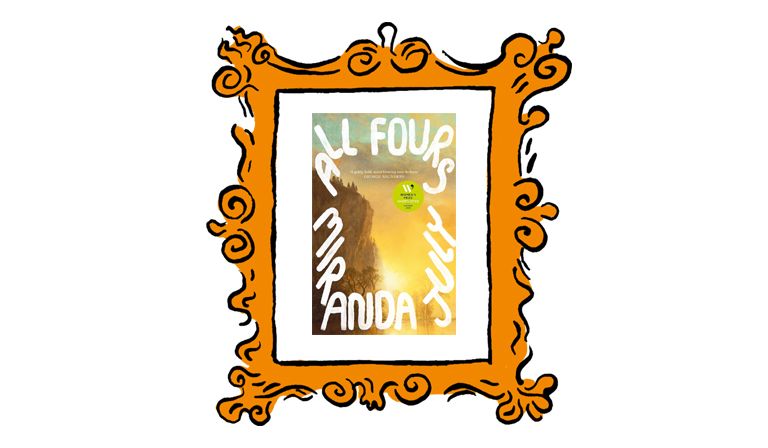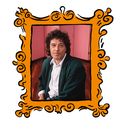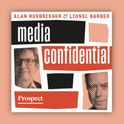Miranda July’s brilliant but bonkers novel All Fours—in which a fortysomething wife, mother and artist holes up in a motel outside her native LA, obsessed with a younger man, all while she pretends to her husband and child that she’s on a solo trip to New York—looks set to be the book of the summer. It’s been published to acclaim across the board, hailed as the celebratory midlife crisis/menopause/divorce novel women that have been waiting for. Or have we?
Two contemporary trilogies—Rachel Cusk’s novels Outline, Transit and Kudos; and Deborah Levy’s three-volume “living autobiography” Things I Don’t Want to Know, The Cost of Living and Real Estate—have been similarly lauded for their candid, confessional takes on middle-aged womanhood. See also the American novelist Dana Spiotta’s recent Wayward, the story of a peri-menopausal woman who, rather than trying to resist it, embraces the “visceral and volcanic rage” she finds herself increasingly consumed by, part of which involves abandoning her marriage and home. And later this summer, Sarah Manguso’s new novel Liars lays bare the smouldering wreckage of a marriage which sucked the life out of an otherwise successful woman writer.
In the same way that readers were excited by the sudden onslaught of truth-telling motherhood narratives a few years back, these stories of midlife metamorphosis and the rejection, in different shapes and forms, of some of the shackles women find themselves imprisoned by—from gendered expectations in heterosexual marriage to the tyranny of socially constructed ideals of feminine beauty and sexuality—are attracting a lot of excited attention. But part of the allure is the argument, albeit sometimes only implicit, that these are subjects that have rarely been written about before, let alone with such nuance or honesty. This, however, isn’t quite true.
Rewind half a century and we find some notable—and, at the time, truly ground-breaking—precursors to these contemporary novels. Doris Lessing’s The Summer Before the Dark (1973), for example, which is a majestic case study of a woman’s midlife awakening. Having “been set like a machine by twenty-odd years of being a wife and a mother,” 44-year-old Kate Brown finds herself alone for the first time in over two decades, embarking on a summer of self-discovery. (I’ve always presumed that Siri Hustvedt’s The Summer Without Men [2011]—itself the story of a middle-aged woman’s rediscovery of her interior life after her husband of 30 years calls for a break in their relationship because he’s having an affair with a much younger woman—owes a debt of gratitude to Lessing’s classic.) Initially, Kate’s adventures are predictable. She gets a job, realises what it is to be valued for attributes beyond those pertaining to the domestic sphere; dyes her hair a beautiful, youthful deep red; and has a fleeting, no-strings-attached affair with a younger man. But then, after falling sick and languishing alone and fevered in a hotel room for three weeks, she emerges emaciated and aged. And it’s in this new guise—that of an unremarkable older woman who no longer attracts male sexual attention—that she finds radical liberation: “Her experiences of the last months—her discoveries, her self-definition, what she hoped were now strengths—were concentrated here: here she would walk into her home with her hair undressed, with her hair tied back straight for utility; rough and streaky, and the widening grey band showing like a statement of intent… now she was saying no: no, no, no, NO—a statement which would be concentrated into hair.” Kate, it turns out, is the original #silversister! (Go check Instagram if that hashtag is new to you.)
During the same era, Lessing’s contemporary Penelope Mortimer was using her fiction to articulate and then process the monumental changes shaping her own life—her divorce, and her children growing up and leaving home—and body—a hysterectomy, recurrent depression and the menopause—by her gruelling middle years. In The Home (1971), a divorcee named Eleanor Strathearn is starting over after 26 years of marriage, “alone, untrammelled, a free human being.” If Mortimer’s most famous novel, The Pumpkin Eater (1962), is the searing portrait of the breakdown of a marriage, then The Home is its sequel in all but name. It’s the story of the traditionally less dramatic episodes of the story: of what happens next, once the divorce is finalised, one’s ex has departed (usually to start over with his new, younger wife) and one’s children have flown the nest, and, to borrow a phrase used by the narrator of Liars, Eleanor discovers she’s been living in “one of those disappearing houses”. Who is she now that she’s no longer someone’s wife and her children don’t need her as they did when they were young? Where and what is her “home” if it’s no longer the hub of a family unit?
“No woman novelist has written of woman in her roles of prisoner, slave and victim more eloquently or more bitterly than Penelope Mortimer,” praised the writer and critic Francis King of The Home. But Mortimer wasn’t finished yet. With her next novel, Long Distance (1974), she pushed her project even further. Written after a traumatic hysterectomy—she had six children, the looking-after of whom had defined her entire adulthood, so this definitive end to her childbearing was not an easy moment—it’s a fragmentary and hallucinatory account of an unnamed female protagonist’s desperate journey through an unspecified institution that’s part Yaddo (where Mortimer wrote much of the novel) and part hospital. The novel’s narrative loops back on itself, dream and reality converge, past and present overlap, and the narrator experiences her fragmented sense of self as a physical splitting. “The sexual and spiritual progress of female middle age has rarely received such an excitingly imaginative treatment,” applauded the Sunday Times when Long Distance was published.
Whether their midlife awakening involves an actual geographical journey—see also Candida Wilton, the middle-aged, divorced heroine of Margaret Drabble’s 2002 novel The Seven Sisters, who, after receiving an unexpected windfall, gathers six friends for a trip around Italy—or merely an inner voyage of awakening, some kind of transformative experience is key to these stories. If Drabble, Lessing and Mortimer showed today’s writers that there is life after divorce or menopause, this younger generation is now forging forward, proving just how generative and full these afterlives can be.
The midlife crisis that’s lasted decades
Miranda July’s ‘All Fours’ is the middle-age novel that women have been waiting for. Or is it? Numerous other writers have walked this terrain...
June 20, 2024










